
Sandpit (Irish : Clais an Ghainimh) [1] is a small village in the rural hinterland of Drogheda in County Louth, Ireland. It lies in the townland of Milltown, [1] which had a population of 213 as of the 2011 census. [2]

Sandpit (Irish : Clais an Ghainimh) [1] is a small village in the rural hinterland of Drogheda in County Louth, Ireland. It lies in the townland of Milltown, [1] which had a population of 213 as of the 2011 census. [2]
Sandpit is located approximately 6 kilometres (4 mi) north of Drogheda, off the road to Termonfeckin. The village lies in civil parish of Termonfeckin, [1] between the M1 motorway and the coast, where there are beaches and golf courses at Baltray and Seapoint.[ citation needed ]
Within the village is a 19th-century church, [3] a small supermarket, [4] and the local national (primary) school. [5] Also nearby is a community hall, [4] which is used by some local organisations and houses a playschool.[ citation needed ]
The Catholic church, the Church of the Assumption, [3] [4] is in Termonfechin parish in the Roman Catholic Archdiocese of Armagh. [6]
Sandpit National School, which was founded in 1956, [5] had an enrollment of approximately 260 pupils in 2012. [7]
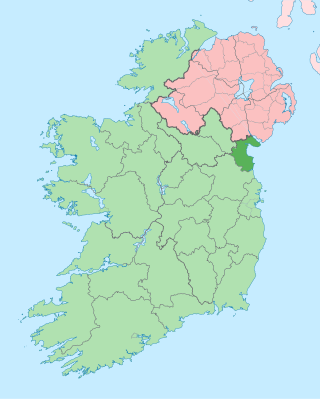
County Louth is a coastal county in the Eastern and Midland Region of Ireland, within the province of Leinster. Louth is bordered by the counties of Meath to the south, Monaghan to the west, Armagh to the north and Down to the north-east, across Carlingford Lough. It is the smallest county in Ireland by land area and the 17th most populous, with just over 139,100 residents as of 2022. The county is named after the village of Louth. Louth County Council is the local authority for the county.

Ardee is a town and townland in County Louth, Ireland. It is located at the intersection of the N2, N52, and N33 roads. The town shows evidence of development from the thirteenth century onward but as a result of the continued development of the town since then much of the fabric of the medieval town has been removed. The town is in a civil parish of the same name.

Dunleer is a town and townland in County Louth, Ireland. Dunleer is situated midway between Dundalk and Drogheda and is located on the junction of the R132, R169 and R170 regional roads that intersect the town. As of the 2022 census, the town had a population of 2,143.

Keady is a village and civil parish in County Armagh, Northern Ireland. It is south of Armagh and near the border with the Republic of Ireland. It is situated mainly in the historic barony of Armagh with six townlands in the barony of Tiranny. It had a population of 3,051 people in the 2011 Census.

Termonfeckin or Termonfechin is a small village and townland in County Louth, Ireland. It is within a civil parish of the same name, and is 8 km (5.0 mi) north-east of Drogheda. The population of the village almost quadrupled in the period between the 1996 and 2022 census, growing from 530 to 1,983 inhabitants.
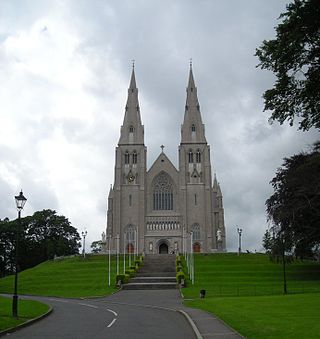
The Archdiocese of Armagh is a Latin ecclesiastical territory or archdiocese of the Catholic Church located in the northern part of Ireland. The ordinary is the Roman Catholic Archbishop of Armagh who is also the Metropolitan of the ecclesiastical province of Armagh and the Primate of All Ireland. The mother church is St Patrick's Cathedral. The claim of the archdiocese to pre-eminence in Ireland as the primatial see rests upon its traditional establishment by Saint Patrick circa 445. It was recognised as a metropolitan province in 1152 by the Synod of Kells.

Mullaghbrack, Mullabrack or Mullaghbrac is a small civil parish, townland and village in County Armagh, Northern Ireland. The village of Mullaghbrack is on the road between Markethill and Hamiltonsbawn, just north of Gosford Forest Park. It had a population of 54 people in the 2011 census, down from 75 people as of the 2001 census.

Tullyallen is a village, civil parish and townland 6 km north-west of the town of Drogheda in County Louth, Ireland. It is in the historic Barony of Ferrard. It is located in the historical Boyne Valley, in the Catholic parish of Mellifont ; it is also close to Newgrange, Knowth and Dowth burial mounds, Monasterboice monastery, and to the Battle of the Boyne site.

Larah or Laragh is a civil parish and townland in County Cavan, Ireland. The principal village in the civil parish is Stradone which is located 1 km from the N3 national road. Laragh is an ecclesiastical parish in the Roman Catholic Diocese of Kilmore. There are three churches in the parish namely in Larah, Clifferna and Carrickallen. There are two national schools, at Larah and Clifferna, respectively.

Clogherhead is a fishing village in County Louth, Ireland. Located in a natural bay on the east coast it is bordered by the villages of Annagassan to the north and Termonfeckin to the south. It has a population of 2,145 according to the 2016 census. It is located in the townlands of Clogher and Callystown, about 12 km (7 mi) northeast of Drogheda. As a seaside village, its main industries are fishing and farming, and there has been an RNLI lifeboat stationed in the village for over 100 years.

Baltray is a village and townland in County Louth, Ireland. It sits on the northern shore of the River Boyne estuary.

The Diocese of Armagh is the metropolitan diocese of the ecclesiastical province of Armagh, the Church of Ireland province that covers the northern half (approximately) of the island of Ireland. The diocese mainly covers counties Louth, Tyrone and Armagh, and parts of Down. The diocesan bishop is also the Archbishop of Armagh, the archbishop of the province, and the Primate of All Ireland. The Archbishop has his seat in St Patrick's Cathedral in the town of Armagh.
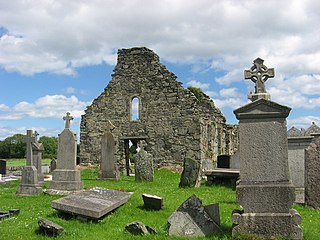
Togher is a large parish in County Louth, Ireland. A rural parish in the Roman Catholic Archdiocese of Armagh, Togher is situated approximately halfway between Drogheda and Dundalk.
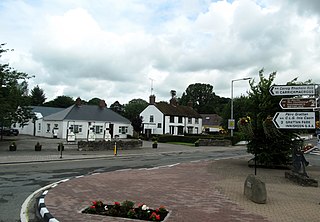
Inniskeen, officially Inishkeen, is a small village, townland and parish in County Monaghan, Ireland, close to the County Louth and County Armagh borders. The village is located about 17 kilometres (11 mi) from Dundalk, 11 km (7 mi) from Carrickmacross, and 5 km (3 mi) from Crossmaglen. Seven townlands of this Roman Catholic Diocese of Clogher parish lie within County Louth.

Kentstown is a village in County Meath in Ireland at the junction of the R153 and R150 regional roads. The village is in a townland and civil parish of the same name.

Tinure, also Tenure, is a small village and townland in the parish of Monasterboice, County Louth, Ireland.

Ravensdale is a village, townland and electoral division located at the foothills of the Cooley Mountains on the Cooley Peninsula in the north of County Louth in Ireland. Bordering with the townland of Doolargy, Ravensdale is approximately 8 km to the north of Dundalk. The dual carriageway between Dublin and Belfast runs nearby, and the R174 connects it with Jenkinstown.

Donore, historically Dunower, is a small village in County Meath, Ireland. It lies near Drogheda on the border between County Meath and County Louth, in the Boyne Valley on the road between Drogheda and the Brú na Bóinne heritage site. The village is in a civil parish of the same name.
Castleknock is a civil parish and a townland located in the south-western corner of the modern county of Fingal, Ireland. The civil parish is part of the ancient barony of Castleknock. It is centred on the suburban village of Castleknock. The townland of Castleknock itself is the location of the eponymous "Cnucha's Castle" – Castleknock Castle. The town with the biggest population in the parish is Blanchardstown. In geology, the parish rests on a substratum of limestone and comprises 2943 statute acres, the whole of which is arable land.
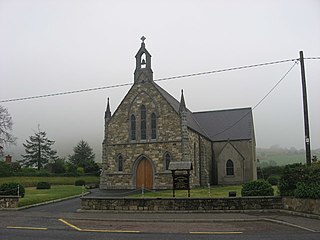
Lordship is a rural area and census town in County Louth, Ireland. It is located in the civil parish of Ballymascanlan.
Population [..] Townlands [..] Milltown, Termonfeckin, Co. Louth [..] 213
Church of the Assumption, Sandpit